Nevada State Parks, Part 1
January – February 2017
PART 1: CLARK COUNTY IS HOME TO THE STATE’S OLDEST AND NEWEST STATE PARKS.
BY MEGG MUELLER
The National Park Service was established in 1916 as a means to preserve natural and cultural resources so they could be enjoyed for generations to come. Just 100 years later, America’s more than 10,000 parks receive approximately 275 million visitors a year. Nevada’s first state park was established in 1935, and in little more than six decades, we’ve created 23 distinct parks—from a historic schoolhouse to prehistoric rock formations, glacial lakes to charcoal ovens. Whether the adventure is watersports, hiking, camping, or a history lesson, Nevada has it all.
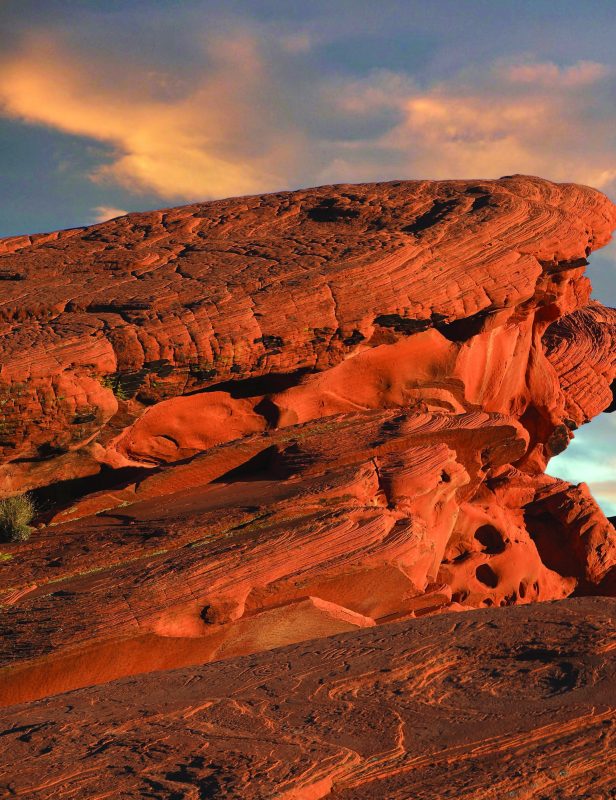 The parks located in southern Nevada—Clark County to be exact—are a perfect place to start a yearlong excursion of what the state parks have to offer. The variety of experiences available is as diverse as it is engaging.
The parks located in southern Nevada—Clark County to be exact—are a perfect place to start a yearlong excursion of what the state parks have to offer. The variety of experiences available is as diverse as it is engaging.
VALLEY OF FIRE
Nevada’s oldest and largest state park, Valley of Fire State Park was officially dedicated in 1935. Best known for its fantastic geological features, ancient petroglyphs, and extreme temperatures, the park easily hosts everyone from the most adventurous camper to the casual drive-through traveler. The white, pink, red, orange, and tan sandstone that colors the landscape is a favorite of photographers, especially at sunset and sunrise. Located about 50 miles northeast of Las Vegas, the park has miles of trails, camping (tent and full RV hook-up), visitor center, and ADA campsites.
Things to look out for: Elephant Rock; the “bacon” wave; a wooden shack frame that was part of the movie set for “The Professionals” Burt Lancaster’s 1966 film; and wildlife, including Nevada’s state animal and reptile—desert bighorn sheep and desert tortoise, respectively.
“Roadrunners, coyotes, and lizards are pretty common,” Valley of Fire Park Ranger Chris Johnson says. “It’s also not uncommon to see a desert kit fox rummaging in the campgrounds at night.”
Spring and fall are the most popular times of the year to visit, due to the unforgiving temperature extremes. Summer days can see temps soar to 120 degrees, while summer nights can vary widely. Winter in the park sees freezing weather, or on some days, 75-degree temperatures. Make sure to stop by the visitor center first to learn about the history of the park and get tips for your visit. Guided hikes and children’s activities are routinely offered.
Valley of Fire State Park
29450 Valley of Fire Road Overton,
NV 89040
parks.nv.gov, 702-397-2088
OLD LAS VEGAS MORMON FORT
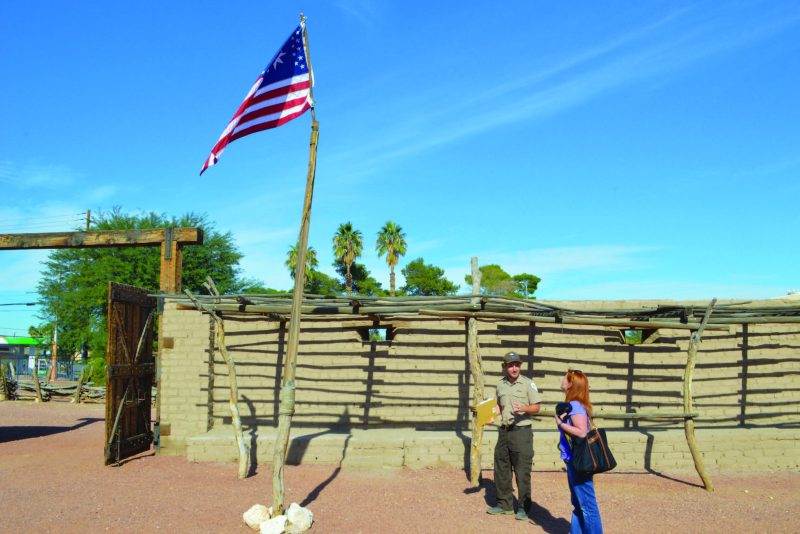 The unexpected delight of Old Las Vegas Mormon Fort State Historic Park makes up for the fact the park is basically hidden in plain site. Established as a state park in 1991, it straddles the line of downtown Las Vegas and North Las Vegas—seemingly plopped ungraciously between government buildings, the freeway, and the Cashman Center. Mormon Fort is a hidden gem that begs discovery.
The unexpected delight of Old Las Vegas Mormon Fort State Historic Park makes up for the fact the park is basically hidden in plain site. Established as a state park in 1991, it straddles the line of downtown Las Vegas and North Las Vegas—seemingly plopped ungraciously between government buildings, the freeway, and the Cashman Center. Mormon Fort is a hidden gem that begs discovery.
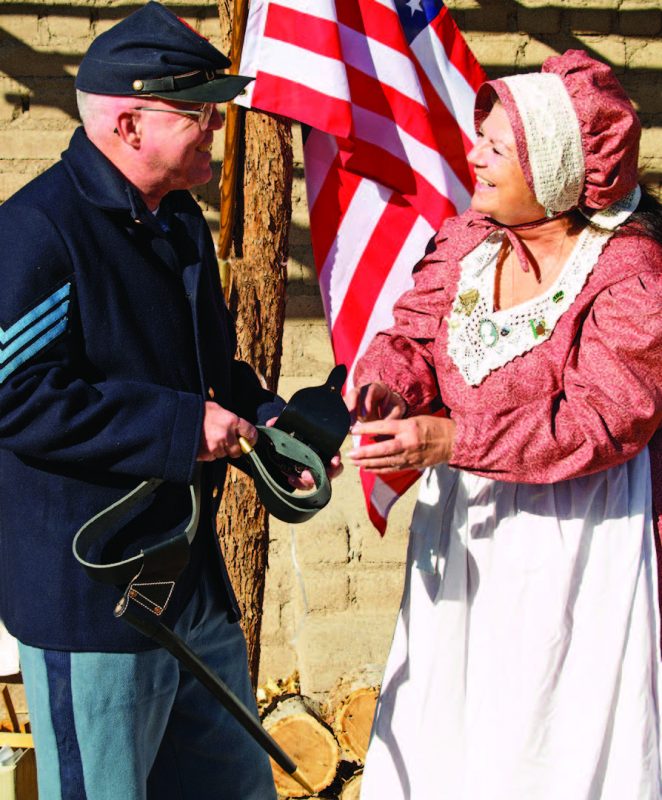 In 1855, water from Las Vegas Creek had made the area fertile, with grass for miles and the only free-flowing water in the area. The Paiutes called the area home until non-native settlers arrived, creating a Mormon outpost when an adobe fort was built that year. The creek, which stems from Springs Preserve, no longer flows as it did in 1855 but remnants of the original fort still stand today. Park Interpreter Garrett Fehner explains the small creek running through the grounds is a reconstruction of the now-dry Las Vegas Creek.
In 1855, water from Las Vegas Creek had made the area fertile, with grass for miles and the only free-flowing water in the area. The Paiutes called the area home until non-native settlers arrived, creating a Mormon outpost when an adobe fort was built that year. The creek, which stems from Springs Preserve, no longer flows as it did in 1855 but remnants of the original fort still stand today. Park Interpreter Garrett Fehner explains the small creek running through the grounds is a reconstruction of the now-dry Las Vegas Creek.
“We’re committed to talking about the meadow environment, the trees, and the natural history of the area,” Garrett says.
Special programs at the park include history talks, craft sessions for kids, campfires, Dutch oven cook-off, and Pioneer Christmas. Engaging the community of Las Vegas to discover more about the birthplace of their city is an ongoing effort, Garrett says. The programs entertain and educate. The fort was home to one of the city’s most influential pioneers—Helen Stewart. When her husband was killed in 1884, Stewart did the unthinkable for a woman in that time; she stayed on her ranch. She not only thrived there, she was instrumental in the development of the community. The park’s visitor center houses a number of exhibits about the fort and region, plus it contains many historic artifacts. After your visit, step outside into the world of Old Las Vegas.
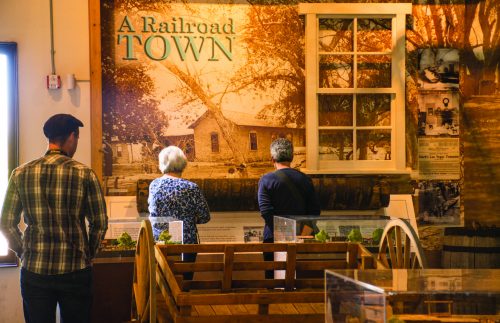 Mormon Fort and through the remains of the Las Vegas Valley’s first dwelling before you head back to The Strip. It’s a humbling, authentic experience you won’t forget.
Mormon Fort and through the remains of the Las Vegas Valley’s first dwelling before you head back to The Strip. It’s a humbling, authentic experience you won’t forget.
Old Las Vegas Mormon Fort State Historic Park
500 E. Washington Ave.
Las Vegas, NV 89101
parks.nv.gov, 702-486-3511
BIG BEND OF THE COLORADO
Our newest park—and the furthest south—opened in 1996. Big Bend of the Colorado State Recreation Area wanders along the shores of the Colorado River just south of Laughlin. The shoreline is dotted with covered shelters, picnic benches, horseshoe pits, and sandy beaches. A 24-unit campground that mostly pull-through sites for RVs up to 60 feet is set back from the water and a favorite of Snowbirds escaping the winter chill, but it has local fans, too.
“We love it here,” Jim Queen of Boulder City says. “We’ve been to most of the state parks.”

The avid RVer and his wife, Nikki, are set up in Big Bend for two weeks. They come complete with good friends—Juan and Shirley Gomez have been camping with the Queens for decades and all four know how to do it right. Jim even brings a small freezer and makes his own ice. Nikki loves the space at Big Bend.
“It’s such a great park,” she says. “We have everything we need, and you’re not on top of each other here.”
Space is definitely not in short supply at Big Bend. The parking lot for the beach access is huge, the concrete paths to the shelters are extremely wide, and the boat launch has two lanes so fisherman can try their luck with ease. The park is very ADA friendly; three campsites are reserved for those with permits, parking, and beach access points are accessible for most, with rubber mats occasionally snaking down toward the water.
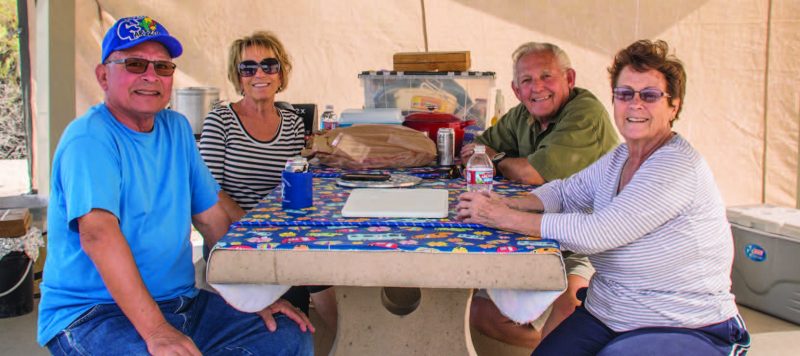 Both couples are fans of the number of trails accessible from the campground. Jim notes you could take a dirt trail all the way to Boulder City, and the quartet loves to take out Jim’s quad—the “Pope Mobile”—and ride the surrounding hills.
Both couples are fans of the number of trails accessible from the campground. Jim notes you could take a dirt trail all the way to Boulder City, and the quartet loves to take out Jim’s quad—the “Pope Mobile”—and ride the surrounding hills.
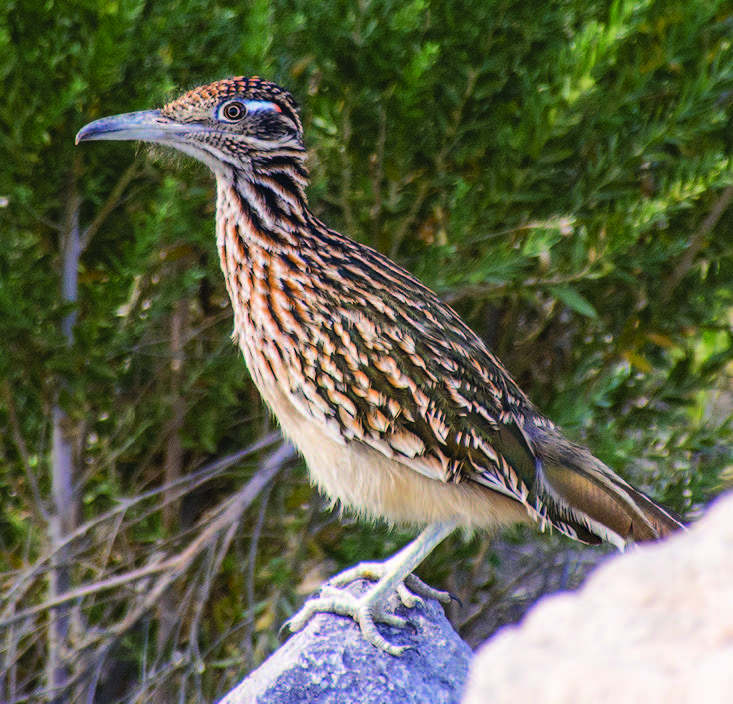 One reason the group keeps coming back is Park Ranger Jonathan Brunjes. Jonathan is responsible for park programs like a Dutch oven Thanksgiving dinner, and other events designed to get people out and into the park. Four miles of trail are in the campground for hikers or mountain bikers looking to catch a glimpse of some of the abundant wildlife, such as cottontail, fox, beaver, and even the occasional bobcat or bighorn sheep.
One reason the group keeps coming back is Park Ranger Jonathan Brunjes. Jonathan is responsible for park programs like a Dutch oven Thanksgiving dinner, and other events designed to get people out and into the park. Four miles of trail are in the campground for hikers or mountain bikers looking to catch a glimpse of some of the abundant wildlife, such as cottontail, fox, beaver, and even the occasional bobcat or bighorn sheep.
Roadrunners compete with quail for mesquite beans, while numerous waterfowl look on. Unlike most other state parks in Nevada, water is the focus of Big Bend, and with summer temps that can soar to 120 degrees, it’s no wonder the shores of the rolling river call to guests. Bring your swimsuit and sunscreen.
Big Bend of the Colorado State Recreation Area
4220 S. Needles Hwy. #3
Laughlin, NV 89029
parks.nv.gov, 702-298-1859
SPRING MOUNTAIN RANCH
Finally, we have a huge park just 15 miles west of Las Vegas that is also a historic center. Spring Mountain Ranch State Park was established in the 1870s as prospectors discovered six bubbling springs on the land, as had Paiutes, just outside the Red Rock Canyon National Conservation Area. The working ranch changed names a few times, and went through a host of owners—radio star Chet Lauck, German actress Vera Krupp, and Howard Hughes, among them. Memorabilia from Krupp includes a secret room, and some of her furniture and glamorous clothing, which are on display.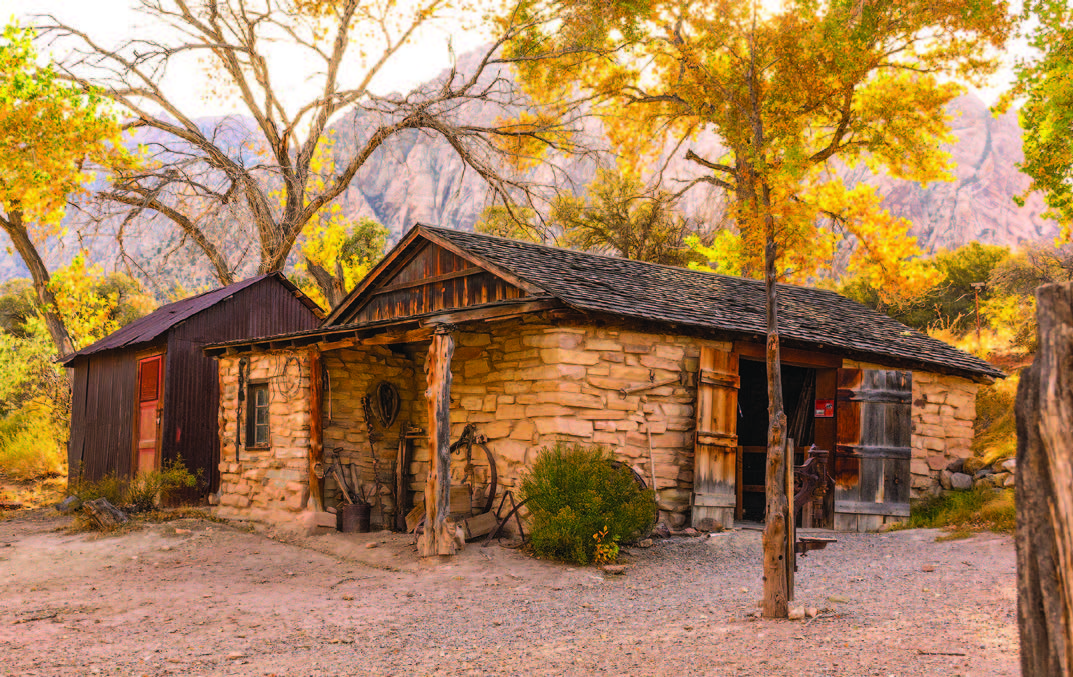
Spring Mountain became a state park in 1974 when the state bought the ranch after plans to develop it into a massive housing project failed. A guided tour is a must, so contact the park to find out the schedule. Visitors can roam parts of the house, but the volunteer docents—an indispensable part of the park, according to Park Supervisor Richard Keller—fill in the blanks of history with fascinating stories. After a tour, venture outside where walking trails allow access to some of the 520 acres, including views of two of the oldest buildings in the state. A massive lawn is dotted with picnic tables and barbecues, where families play while watching the light play off the colorful hills above.
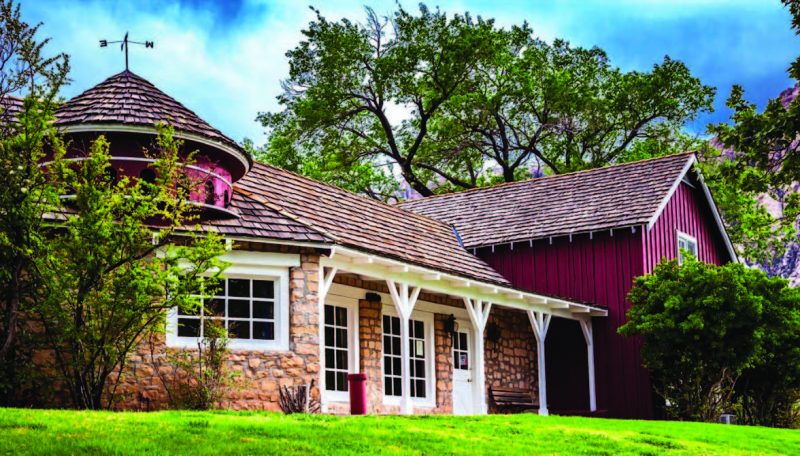 The park hosts many programs and special events, including yoga three times a week and living history programs that bring the ranch’s past to life in vivid retellings of early settlers. Super Summer Theater comes to the park each year, with staged performances including “The Man of LaMancha,” “Young Frankenstein,” and “The Wedding Singer.” A summer tradition since 1976, Super Summer Theater is a big party, with visitors bringing picnic baskets, blankets, chairs, and beverages for a night of theater under the summer sky.
The park hosts many programs and special events, including yoga three times a week and living history programs that bring the ranch’s past to life in vivid retellings of early settlers. Super Summer Theater comes to the park each year, with staged performances including “The Man of LaMancha,” “Young Frankenstein,” and “The Wedding Singer.” A summer tradition since 1976, Super Summer Theater is a big party, with visitors bringing picnic baskets, blankets, chairs, and beverages for a night of theater under the summer sky.
Spring Mountain Ranch State Park
6375 Hwy. 159
Blue Diamond, NV 89004
parks.nv.gov, 702-875-4141
Get it stamped!
Park Passport provides a free annual pass to all Nevada’s parks.
The Nevada State Parks Passport Program aims to encourage Nevada residents and visitors to experience the diverse natural, cultural and recre- ational resources that span Nevada’s state parks. The booklet—which can be picked up at any state park—serves as a travel aid as well as a travelogue for park visitors and includes photos, a description of each park, lists of amenities, travel journal pages, and spaces for validation stamps that have been designed to reflect each park. Once passport holders have their book- lets stamped at 15 different parks, they will earn one free annual pass to all Nevada State Parks. Call 775-684-2770 for more information or to have a passport mailed to you.

